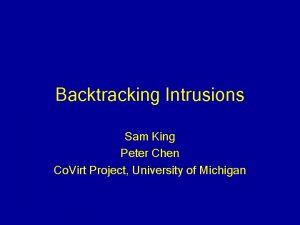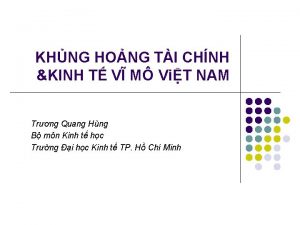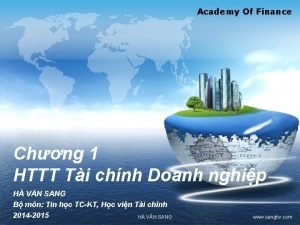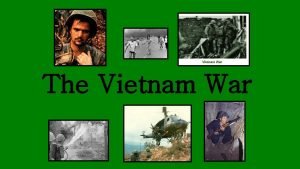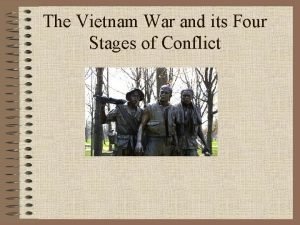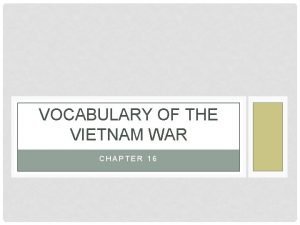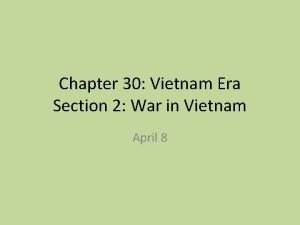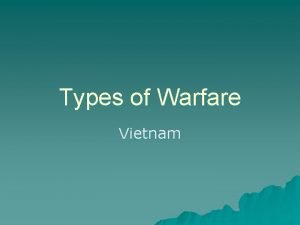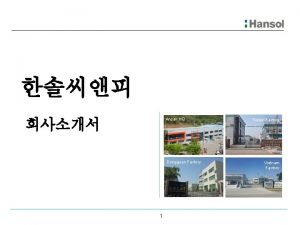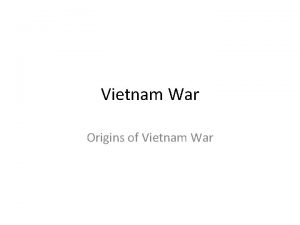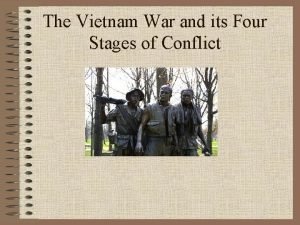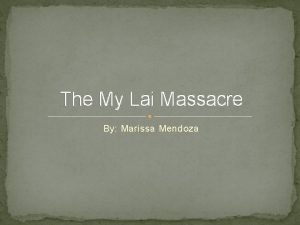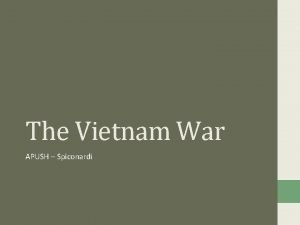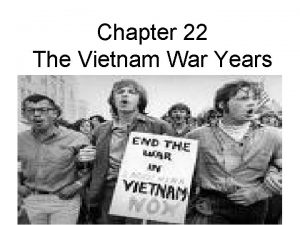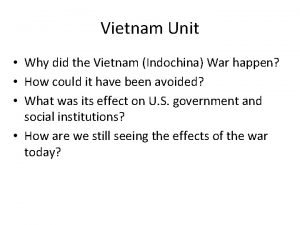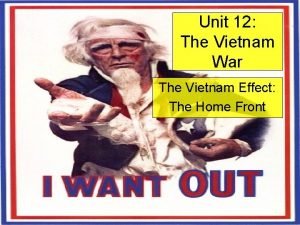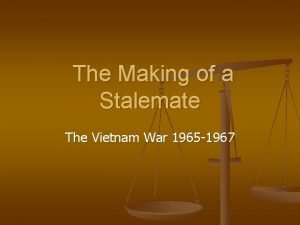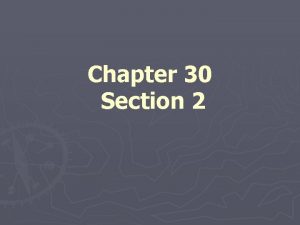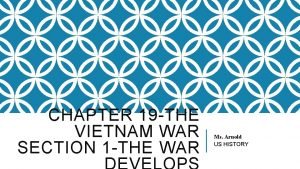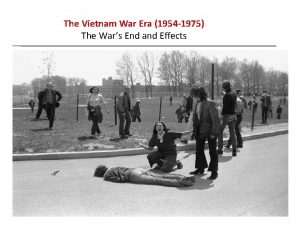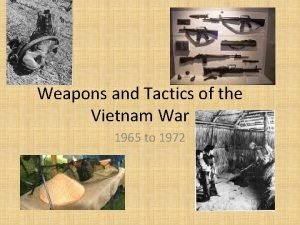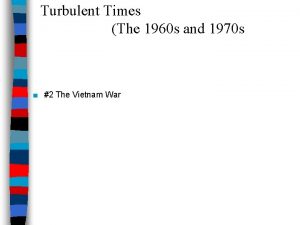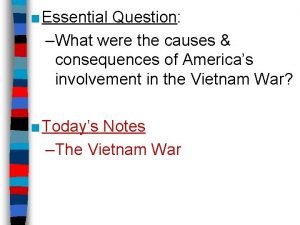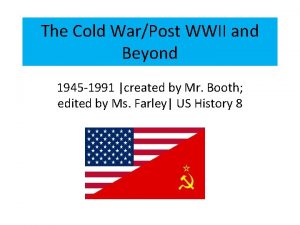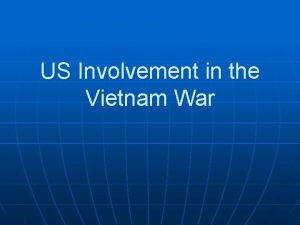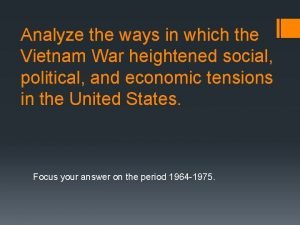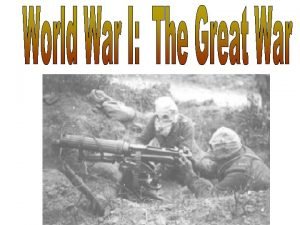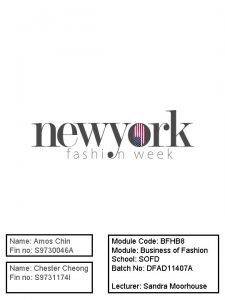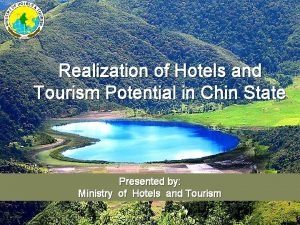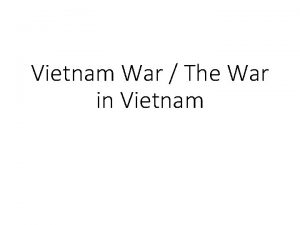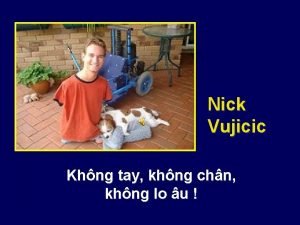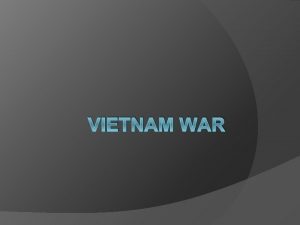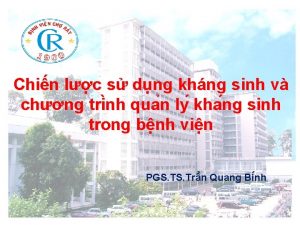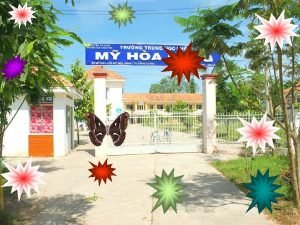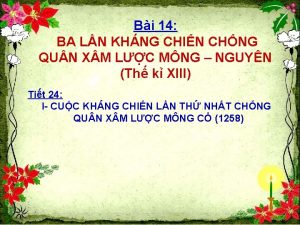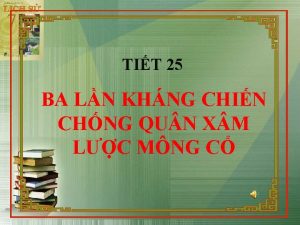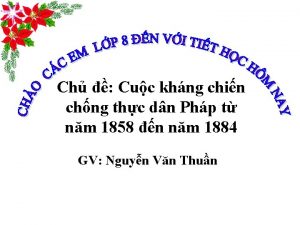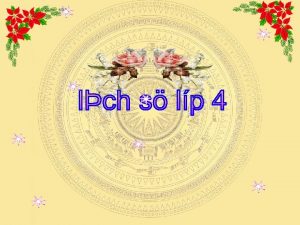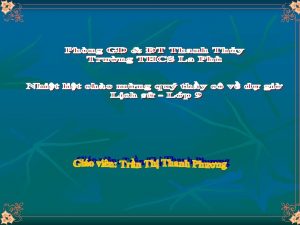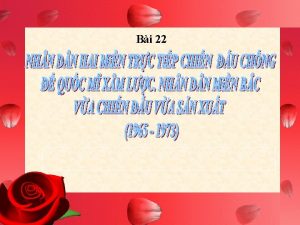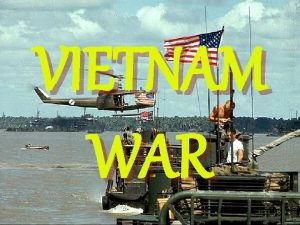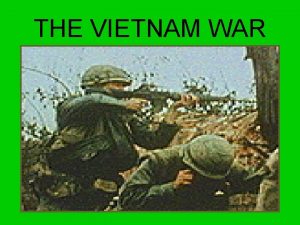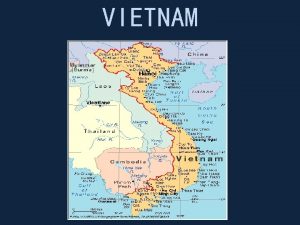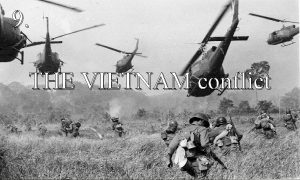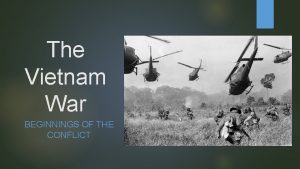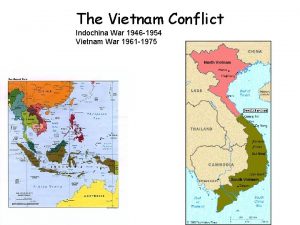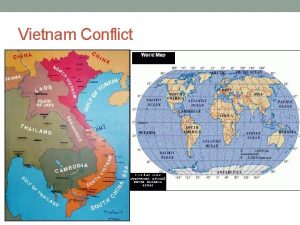The Vietnam War or Conflict Khng chin chng



































- Slides: 35

The Vietnam (War or Conflict? ) Kháng chiến chống Mỹ (Resistance War Against America)

Who fought? • Viet Cong • Communist (supported by China and Soviet arms) • Guerilla fighters • Vietnam People's Army, • Communist (supported by China and Soviet arms) • More conventional fighters • Army of the Republic of Vietnam • “Republic” infers a democracy • Supported / allied with U. S. forces • U. S. Military


Background • Vietnam was colonized by the French in the 1890 s • In 1950 the People’s Republic of China began to support the pro-Communist rebels fighting against the established French government. • To combat Communism, the U. S. sent $1 billion in aid to the French forces between 1950 – 1955. • Not able to combat the guerilla style warfare, the French began to withdraw in 1955. • Fearing the Domino Theory, the U. S. replaced the French, initially supporting the South Vietnamese with $$, but then actual military forces.


(VIDEO #1) Vietnam War Overview Video (4: 00 minutes)

The Gulf of Tonkin Incident • On August 2 nd, 1964 a naval skirmish between North Vietnamese torpedo boats and USS Maddox. • Allegedly a second attack on U. S. vessels occurred two days later on August 4 th. • Immediately the Congress of the United States passed the Gulf of Tonkin Resolution which gave the President the power to use conventional military tactics in Southeast Asia without the approval of Congress. • Within hours retaliatory air strikes were ordered against North Vietnamese bases in the Gulf. • In 2005 new information was declassified that revealed that nothing actually occurred on the night of August 4 th.


Tet Offensive • North Vietnamese forces launched an offensive in January of 1968 during the Vietnamese New Year known as the Tet Offensive

• It was the major turning point in the war. • Statistically it was a victory for the U. S. forces: 35, 000 Viet Cong were killed compared to 2, 800 U. S. soldier • However, it showed that the Viet Cong were willing to dedicate what seemed like an unlimited number of soldiers. VIDEO #2 Tet Offensive Video (2: 05 – 4: 48) (Total: 2: 43 minutes)

Ho Chi Minh Trail

• The trail allowed a steady supply of troops and arms to the Viet Cong in South Vietnam • U. S. troops were not allowed to cross into Laos or Cambodia • Clandestine (secret) missions led by the CIA were in both countries as early as 1964. • Heavy bombing started the same year and continued till 1973 • The North Vietnamese developed an oil pipeline • By the end of the war the H. C. M. Trail was a 4 lane paved road. Commando Lava

Nature of the war




Napalm • A jelly like substance used in bombs, and flame throwers. • Napalm is suitable for use against dug-in enemy personnel. • The burning incendiary composition flows into foxholes, trenches and bunkers, and drainage and irrigation ditches and other improvised troop shelters.



Agent Orange • Herbicide / defoliant • Used to destroy trees and shrubs and reduce hiding places for the Viet Cong • Estimated to have killed 400, 000 and created 500, 000 birth defects • Was not acknowledged by the U. S. government until 2002


President Richard M. Nixon • President from 1969 – 1974 • Escalated the war in Vietnam • Invaded Cambodia and Laos • Bombing campaigns on Cambodia and North Vietnam – hidden from American public • Pentagon Papers and Watergate (VIDEO #4 – The Pentagon Papers – 3: 46 min. )

Invasion of Cambodia • Frustrated by the inability to follow Viet Cong forces into Cambodia and Laos President Nixon made the decision to begin bombing areas along the Ho Chi Minh Trail in 1970 • This was known as Operation Menu

• Following the bombings, Nixon chose to invade Cambodia. Both campaigns were kept hidden from the American people. • It was estimated that approximately 40, 000 Viet Cong were hiding just over the border in Cambodia, using the Ho Chi Minh Trail to evade U. S. forces.

• The attacks were generally a success, destroying strongholds, capturing supplies and weapons from the Viet Cong, however, it has went down in history as a significant black eye for the U. S. and the Nixon Administration.

Vietnamization VIDEO #5 – Cambodia /Vietnamization – 0: 00 – 2: 28 min • A gradual withdrawal of U. S. troops from Vietnam • Called for gradually building up the strength of the South Vietnamese armed forces, and re-equipping it with modern weapons so that they could defend their nation on their own • Also known as the Nixon Doctrine • Reduced U. S. troops from over 500, 000 to 0 by 1974. • Negotiated a cease fire with the North Vietnamese / Viet Cong • Troop withdrawal however is demoralizing. Seasoned veterans are allowed to go home, leaving “green” new recruits. • Fraggings increase.

My Lai Massacre



The Second Front: The Draft Lottery

• 1969 the draft lottery forced men between the ages of 18 -24 into the military. • If your birthday was chosen, you were required by law to report to a military recruiter’s office • Those who did not could face prison time and were called “draft dodgers. ” • The draft strengthened the anti-war movement and encouraged more resentment of the Vietnam War

The Second Front: Kent State Massacre • Unarmed students at Kent State University in Ohio were gunned down by the Ohio National Guard (May 4 th, 1970) • Students had been protesting the invasion of Cambodia • In the days following, over 4 million college students throughout the country protested the shootings • The killings led to more division and negativity revolving around the Vietnam War


End of the War • Nixon’s Vietnamization led to the removal of U. S. troops. • By 1973, the war was being entirely fought by South Vietnamese troops. • By 1975 the North Vietnamese / Viet Cong had control of nearly every area of South Vietnam and were closing in on Saigon, the capital of South Vietnam • On April 30 th, 1975 the last U. S. helicopters evacuated the embassy • Vietnam Syndrome

 Una khng
Una khng Fannie khng
Fannie khng Chng finance
Chng finance Description
Description Truman doctrine and marshall plan venn diagram
Truman doctrine and marshall plan venn diagram Vietnam war summary
Vietnam war summary Stages of the vietnam war
Stages of the vietnam war Vietnam war vocabulary
Vietnam war vocabulary Causes of the vietnam war
Causes of the vietnam war Vietnam war traps
Vietnam war traps Vietnam war
Vietnam war The vietnam war
The vietnam war Stages of vietnam war
Stages of vietnam war Vietnam war massacre
Vietnam war massacre Vietnam war apush
Vietnam war apush The domino theory vietnam war
The domino theory vietnam war Reason for vietnam war
Reason for vietnam war Napalm vietnam war
Napalm vietnam war Pro vietnam war slogans
Pro vietnam war slogans Did the vietnam war end in a stalemate
Did the vietnam war end in a stalemate Chapter 30
Chapter 30 Chapter 19 the vietnam war
Chapter 19 the vietnam war Effects of the vietnam war
Effects of the vietnam war Us weapons vietnam war
Us weapons vietnam war Vietnam war 1960
Vietnam war 1960 What were the causes and effects of the vietnam war
What were the causes and effects of the vietnam war Civil war digging deeper webquest answers
Civil war digging deeper webquest answers Vietnam
Vietnam Analyze the ways in which the vietnam war heightened social
Analyze the ways in which the vietnam war heightened social Whats external conflict
Whats external conflict What is conflict and conflict resolution?
What is conflict and conflict resolution? The definition of external conflict
The definition of external conflict Cold war conflict
Cold war conflict Chin flexion
Chin flexion Amos chin
Amos chin Lc hotels kalay
Lc hotels kalay
